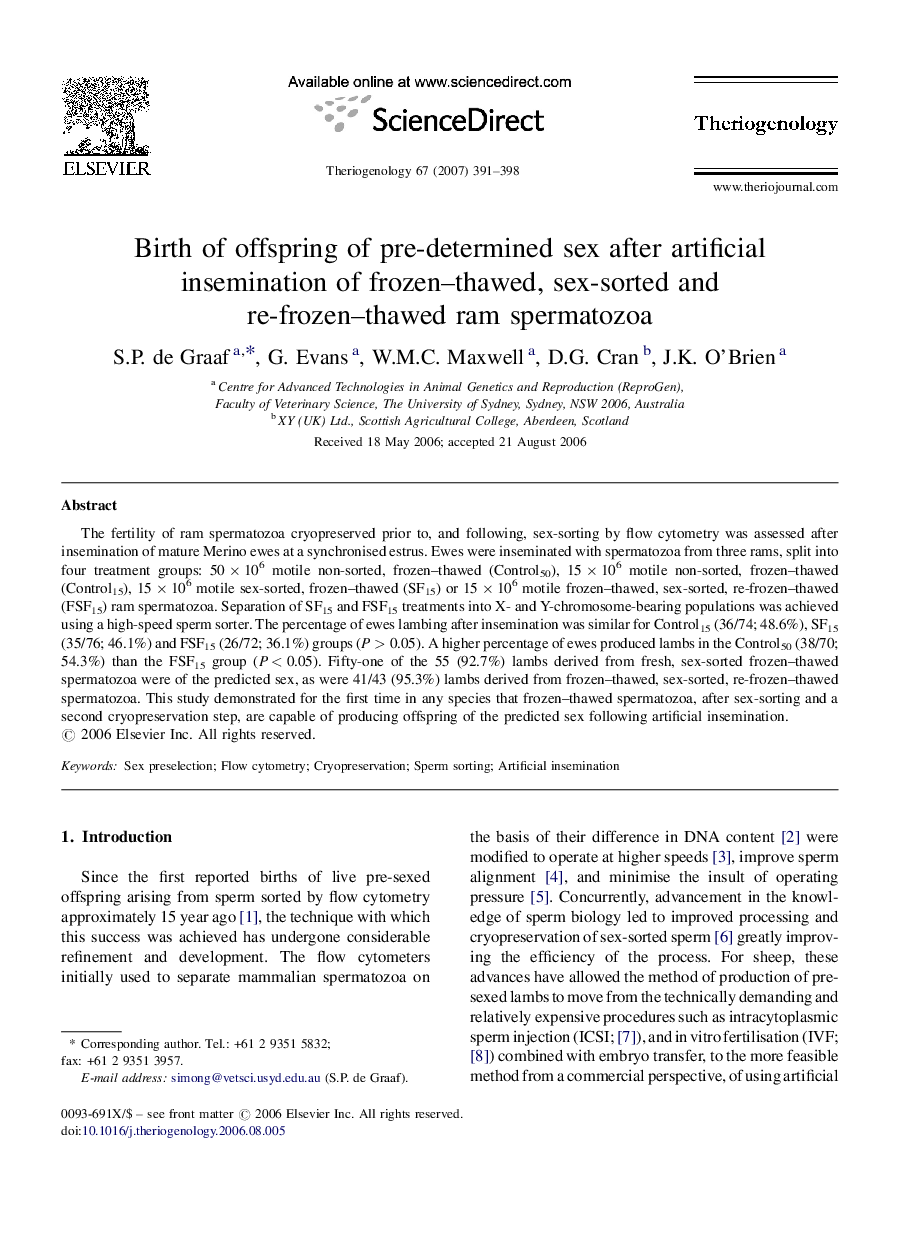| Article ID | Journal | Published Year | Pages | File Type |
|---|---|---|---|---|
| 2096561 | Theriogenology | 2007 | 8 Pages |
The fertility of ram spermatozoa cryopreserved prior to, and following, sex-sorting by flow cytometry was assessed after insemination of mature Merino ewes at a synchronised estrus. Ewes were inseminated with spermatozoa from three rams, split into four treatment groups: 50 × 106 motile non-sorted, frozen–thawed (Control50), 15 × 106 motile non-sorted, frozen–thawed (Control15), 15 × 106 motile sex-sorted, frozen–thawed (SF15) or 15 × 106 motile frozen–thawed, sex-sorted, re-frozen–thawed (FSF15) ram spermatozoa. Separation of SF15 and FSF15 treatments into X- and Y-chromosome-bearing populations was achieved using a high-speed sperm sorter. The percentage of ewes lambing after insemination was similar for Control15 (36/74; 48.6%), SF15 (35/76; 46.1%) and FSF15 (26/72; 36.1%) groups (P > 0.05). A higher percentage of ewes produced lambs in the Control50 (38/70; 54.3%) than the FSF15 group (P < 0.05). Fifty-one of the 55 (92.7%) lambs derived from fresh, sex-sorted frozen–thawed spermatozoa were of the predicted sex, as were 41/43 (95.3%) lambs derived from frozen–thawed, sex-sorted, re-frozen–thawed spermatozoa. This study demonstrated for the first time in any species that frozen–thawed spermatozoa, after sex-sorting and a second cryopreservation step, are capable of producing offspring of the predicted sex following artificial insemination.
